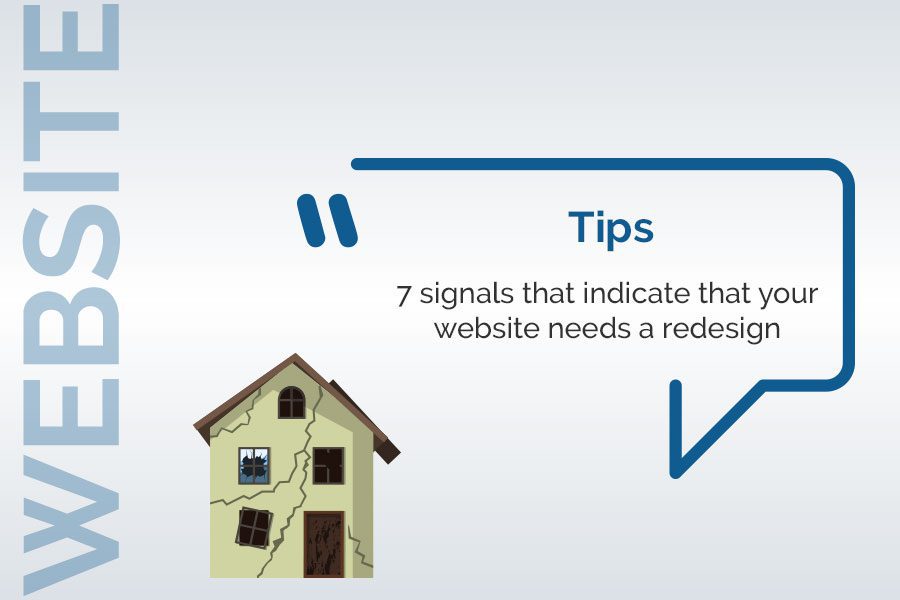Growth Driven Design: the intelligent process for a successful website.
To create or redesign a website there are two methods:




To create or redesign a website there are two methods:
The objective of this method is to produce turnkey and 100% operational websites as soon as they are online.
Sites developed with this approach are designed to meet defined and fixed objectives during their design phase.
The disadvantage of this method is that it requires a lot of time and resources in the company, it offers little flexibility once the site is online and its performance is uncertain and random.
The objective of this flexible and pragmatic approach is to eliminate uncertainties related to results and develop sites designed to adapt to the changing objectives of the company and the needs of its customers.
Faster to implement than the traditional method, the GDD is a process that makes it possible to manage the development of a site in stages after analyzing its performance and the behavior of its visitors.
In summary, a website designed with the traditional method has theoretical and fixed objectives, while a website designed with Growth Driven Design adapts its objectives and resources to the reality of its results and performance.
Growth Driven Design is a method that does not consider a website as a finished product that must be 100% operational and fixed as soon as it is put online. In this alternative and agile approach, marketing and web design work together to achieve common objectives and rapid growth in results.
A GDD site will be built through successive learning that feeds a progressive and continuous development process aimed at engaging interactions with visitors and generating qualified leads.
Powerful tools such as inbound marketing or marketing automation that focus on creating qualified content improve the effectiveness of GDD.


Growth Driven Design is a method that does not consider a website as a finished product that must be 100% operational and fixed as soon as it is put online. In this alternative and agile approach, marketing and web design work together to achieve common objectives and rapid growth in results.
A GDD site will be built through successive learning that feeds a progressive and continuous development process aimed at engaging interactions with visitors and generating qualified leads.
Powerful tools such as inbound marketing or marketing automation that focus on creating qualified content improve the effectiveness of GDD.
By focusing only on what can have a positive impact on a site’s performance and by making continuous improvements, it is possible to launch a first version of the site after only 4 to 8 weeks.
Unlike the traditional method where all services are invoiced before the site is put online, the budget of a Growth-Driven Design site will generally be spread over time on a monthly basis that includes improvements to be made during the site’s life cycle.
Data collection and analysis of a visitors behavior and needs is the foundation of the GDD method. The scalable structure of the sites developed with the GDD provides the necessary flexibility to meet the changing needs of visitors that will have been identified.
The data collected on visitors allows us to know who they are, how they navigate, what content attracts their attention, how many and how they engage or not with a site… The creation of content (blog articles, computer graphics, white papers) is the method preferred by the GDD to meet these needs. By providing them with what they expect, a site that produces quality content increases its chances of being successful and thus optimizes the return on investment.
The design phase of a site in GDD is the longest, but also the most interesting phase of the creation of a website . It is at this stage that your data will start to be analyzed, that your ideas – and those of your agency – will be tested, that you will discover in detail what interests your audience on your site, then perfect it and make it evolve continuously.
The implementation of the GDD approach requires first of all to define both quantitative and qualitative objectives, you must start by defining where you want to go.
Determine specific objectives using, for example, the S.M.A.R.T. method. (Specific – Measurable – Achievable – Realistic – Time-related).


The implementation of the GDD approach requires first of all to define both quantitative and qualitative objectives, you must start by defining where you want to go.
Determine specific objectives using, for example, the S.M.A.R.T. method. (Specific – Measurable – Achievable – Realistic – Time-related).
Buyer Personas are the basis of Growth-Driven Design and inbound marketing strategies. To make your site an effective tool that attracts and transforms your visitors into prospects and then into customers, you must first create your buyer personas.
Buyer Personas are typical customer profiles from which you will deduce the needs according to their behavior and expectations. The more you know about their consumption habits, objectives, issues, research processes, channels they use… the more you can adapt your site to their needs and educate them through adapted and specific content.
The buyer journey is the process by which potential customers (the buyer personas) become familiar with, consider, evaluate and finally buy a product or service. To establish your buyer journey (one per buyer personas) you must put yourself in the place of your ideal customer:
The launch pad is a first version of the site that can be put online after only a few weeks. Its objective is to collect data and compare them with the assumptions made during the development of the strategy.
These information collections will then be repeated as the site develops and pages are created.
The evolution of the site and the addition of new pages to the initial version of the site will again depend on the analysis of the data: user behavior, Call To Action (CTA) effectiveness, customer opinions and comments. The data collected make it possible to determine the actions to be taken to improve and gradually develop the rest of the site.
The optimization of a site in Growth Driven Design is based on cycles that are repeated as the pages are developed and created:


The evolution of the site and the addition of new pages to the initial version of the site will again depend on the analysis of the data: user behavior, Call To Action (CTA) effectiveness, customer opinions and comments. The data collected make it possible to determine the actions to be taken to improve and gradually develop the rest of the site.
The optimization of a site in Growth Driven Design is based on cycles that are repeated as the pages are developed and created:
The Growth Driven Design is an approach that aims for long-term performance and avoids site redesign and an agile method that works in short cycles and by learning and whose objective is to improve the user experience and performance of a site by generating more qualified leads and improving their conversion.
With Growth Driven Design you do not commit yourself to assumptions, your site is not fixed and it will quickly become an easy tool to manage to achieve your objectives and to measure the performance of your sales and marketing efforts.
Would you like to exchange with a Growth Driven Design agency in Luxembourg? Do you have a project to create or redesign a website?
Feel free to contact us for a more detailed presentation of Growth Driven Design and its complement inbound marketing, of which we are a specialist in Luxembourg. We can study together how this methodology is likely to help you achieve your objectives.